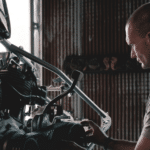Picture this: a vast open car auction, filled with rows of dented hoods, shattered windshields, and rust-streaked doors. Amid the stillness, you hear a hum of activity—a mechanical symphony of inspectors and mechanics assessing each vehicle’s fate. These aren’t mere junkers; these wrecked cars are diamonds in the rough. And for those in the know, they represent opportunity.
Over the past decade, online salvage car auctions have transformed how buyers perceive these once-doomed vehicles. For a growing number of people, buying and restoring salvage cars isn’t just a hobby; it’s a profitable venture or a way to score an affordable set of wheels. But what goes into bringing a wrecked car back to the road? And how have companies like Copart, IAAI, and AutoBidMaster revolutionized this journey?
Salvage Cars and Their Appeal: More Than Meets the Eye
The term salvage cars often evokes an image of total loss vehicles destined for the scrapyard. But in reality, many of these cars still have plenty of life left in them. A salvage title typically indicates a vehicle that has been damaged in an accident, flood, or other events, resulting in an insurance company declaring it a total loss. However, not all totaled cars are beyond repair. Some vehicles bear only cosmetic damage or minor mechanical issues, making them prime candidates for restoration.
Enter platforms like Copart, IAAI, and AutoBidMaster – car auction online powerhouses that have made buying wrecked cars easier than ever. These companies provide transparent listings, detailed damage reports, and innovative virtual bidding tools, allowing buyers to navigate the complex world of salvage auctions with a sense of confidence.
The Salvage Giants: Copart, IAAI, and AutoBidMaster
Copart: The Industry Trailblazer
Founded in 1982 in Vallejo, California, Copart has grown from a single salvage yard to a global online auction leader. The company’s signature platform offers access to over 250,000 vehicles listed daily across 200 locations worldwide. By pioneering a fully online auction experience with its Virtual Bidding Technology, Copart has set the standard for digital vehicle sales.
But Copart doesn’t just stop at damaged vehicles. It offers a wide range of inventory, including clean title vehicles that have little to no damage, fleet vehicles, and repossessed cars. The platform’s Vehicle Finder feature and comprehensive damage reports enable buyers to sift through thousands of listings efficiently, focusing on specific models, years, or even types of damage.
IAAI: Insurance Specialist and Data Pioneer
A key player in the salvage auto auction industry, IAAI—or Insurance Auto Auctions, Inc.—was established in 1982, initially focusing on insurance vehicles. The company’s longstanding partnerships with major insurers have provided a steady stream of wrecked cars for buyers seeking everything from light repairs to complete rebuilds.
What sets IAAI apart is its emphasis on technology. From its proprietary IAA 360 View, which allows buyers to inspect a vehicle virtually, to its VIN-based vehicle history reports, IAAI offers a more data-driven experience. This tech-centric approach helps potential buyers mitigate risks, which is crucial when investing in salvage cars.
AutoBidMaster: The Auction Broker for the People
While AutoBidMaster doesn’t operate salvage yards itself, it plays a critical role as a licensed broker, giving non-dealers access to Copart’s extensive inventory. This approach removes the licensing barrier, opening the door to casual buyers and enthusiasts alike.
AutoBidMaster differentiates itself by offering different membership tiers, giving users access to bidding assistance, post-purchase services, and shipping arrangements. The platform’s emphasis on user support and education through guides and webinars helps bridge the gap for first-time buyers, turning an intimidating process into an accessible endeavor.
The Road to Redemption: Restoring and Rebuilding Wrecked Cars
So, how do these wrecked cars make their way from the auction lot back to the open road? For many buyers, the journey starts with identifying a vehicle with potential. Cars with a clean title and minor cosmetic damage are highly sought after, as they often require fewer repairs and present lower risk.
Restorers carefully evaluate damage reports and vehicle history, weighing factors like mileage, make, and cost of replacement parts. After purchasing a vehicle, the real work begins. This phase can involve everything from repairing structural damage and replacing missing parts to repainting and cosmetic detailing. When done right, the end result can be a vehicle that not only looks great but also runs as smoothly as its showroom counterparts.
But is it worth it? For those willing to invest the time and effort, the answer is often a resounding yes. Restoring salvage cars can be a cost-effective way to obtain a vehicle that might otherwise be out of budget, and it’s an enticing prospect for gearheads and bargain hunters alike.
Transforming the Salvage Industry: A Win-Win for Buyers and Sellers
The rise of these platforms has done more than just simplify the buying process; it has democratized access to a market that was once exclusive to dealers and seasoned insiders. Companies like Copart, IAAI, and AutoBidMaster are empowering a broader audience, offering transparency, convenience, and cost savings to buyers around the world.
This shift is also beneficial for sellers, particularly insurance companies and fleet operators looking to recoup losses. By offering these vehicles to a global audience, sellers can often achieve higher recovery rates than through traditional local salvage yards. For buyers, the competition for salvage cars with clean titles or light damage can get fierce, which speaks volumes about the growing demand.
Conclusion: A Second Life on the Road
In the ever-evolving automotive market, salvage vehicles are emerging as an underappreciated resource. Thanks to platforms like Copart, IAAI, and AutoBidMaster, these wrecked cars are finding new owners, fresh coats of paint, and second lives on the road. Whether you’re looking to cash in on a fixer-upper or score a bargain on a clean-title ride, these digital auction giants have turned the once daunting salvage market into a world of opportunity.
For buyers willing to put in the research and effort, the journey from totaled to treasured can be a rewarding—and profitable—adventure.
FAQs
What is the significance of a clean title in a salvage auction?
A clean title indicates that a vehicle hasn’t been declared a total loss by an insurer and has no major past damage, making it easier to register and insure.
Are Copart, IAAI, and AutoBidMaster reliable platforms for first-time buyers?
Yes, these platforms provide detailed listings, inspection tools, and buyer resources to help first-time buyers navigate the process with confidence.
What should I consider before bidding on a wrecked car?
Before bidding, evaluate the extent of the damage, the vehicle’s history, and estimated repair costs. Use the platform’s inspection tools and damage reports to make an informed decision.
Why do some people buy salvage cars instead of new or used cars?
Salvage cars often offer significant cost savings, and for those skilled in repairs, they can be restored to near-new condition at a fraction of the cost of a new car.
What role does AutoBidMaster play in the salvage auction market?
AutoBidMaster acts as a licensed broker, providing everyday buyers with access to Copart’s auction inventory and offering services like bidding assistance and shipping arrangements.
Published By: Aize Perez



















